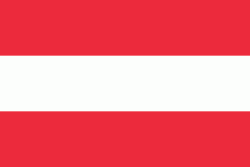Kufstein District (Politischer Bezirk Kufstein)
The Bezirk Kufstein is an administrative district (bezirk) in Tyrol, Austria. It borders Bavaria (Germany) in the north, the Kitzbühel district in the southeast, and the Schwaz district in the southwest.
The district has a geographical area of 969.81 km², and a population of 101,321 (2012) giving a population density of 104 people per km². The administrative center is Kufstein.
The district comprises the lower part of the Tyrolean Inn valley as far as the Bavarian border, the Alpbach valley, the Brandenberg valley, Wildschönau, and Thiersee. Mountain ranges within the district include the Brandenberg Alps, Kitzbühel Alps, and the Kaisergebirge. The largest lakes are the Reintal lakes, Thiersee, Hechtsee, Hintersteiner See and Walchsee.
The district is divided into 30 municipalities, three of them are towns, and two of them are market towns.
The district has a geographical area of 969.81 km², and a population of 101,321 (2012) giving a population density of 104 people per km². The administrative center is Kufstein.
The district comprises the lower part of the Tyrolean Inn valley as far as the Bavarian border, the Alpbach valley, the Brandenberg valley, Wildschönau, and Thiersee. Mountain ranges within the district include the Brandenberg Alps, Kitzbühel Alps, and the Kaisergebirge. The largest lakes are the Reintal lakes, Thiersee, Hechtsee, Hintersteiner See and Walchsee.
The district is divided into 30 municipalities, three of them are towns, and two of them are market towns.
Map - Kufstein District (Politischer Bezirk Kufstein)
Map
Country - Austria
 |
 |
| Flag of Austria | |
Austria emerged from the remnants of the Eastern and Hungarian March at the end of the first millennium. Originally a margraviate of Bavaria, it developed into a duchy of the Holy Roman Empire in 1156 and was later made an archduchy in 1453. In the 16th century, Vienna began serving as the empire's administrative capital and Austria thus became the heartland of the Habsburg monarchy. After the dissolution of the Holy Roman Empire in 1806, Austria established its own empire, which became a great power and the dominant member of the German Confederation. The empire's defeat in the Austro-Prussian War of 1866 led to the end of the Confederation and paved the way for the establishment of Austria-Hungary a year later.
Currency / Language
| ISO | Currency | Symbol | Significant figures |
|---|---|---|---|
| EUR | Euro | € | 2 |
| ISO | Language |
|---|---|
| HR | Croatian language |
| DE | German language |
| HU | Hungarian language |
| SL | Slovene language |

















